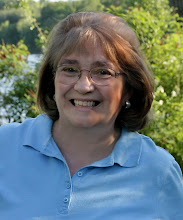Haven’t posted in a while, been very busy. So, I thought I would do something on all the waterfowl at Horn Pond. We certainly have plenty!
The biggest water birds we have are of course, the Mute Swans! We had four mated pair this year but I can only find two pair left with families. One hangs out in the Lagoon and they are down to four Cygnets. When they were still very little (as my daughters put it, "fuzzy bathtub toy" stage) they would hop up on mom’s back.
The biggest water birds we have are of course, the Mute Swans! We had four mated pair this year but I can only find two pair left with families. One hangs out in the Lagoon and they are down to four Cygnets. When they were still very little (as my daughters put it, "fuzzy bathtub toy" stage) they would hop up on mom’s back.
Often in the late afternoon/early evening they come up at an opening on the Lagoon side and preen themselves (they imitate Mom very well) and the babies get some shuteye!!! They seem to like cuddling with each other.
One day I found them in the closest corner of the Lagoon to the Water Street entrance, all slurping up Duck Weed. So I guess the ducks aren’t the only ones that like this little water plant! Dad is very protective, still. They will chase other swans and the geese if they get to close. I noticed that the male tends to stay in the water a lot when the female and the cygnets are up on land preening. And when they are on the land they don’t like dogs very much!




The pair over in the Sandpit only has one cygnet remaining. And he’s getting pretty big! This family can be very hard to spot as there are lots of hiding places in the flooded area next to Fowle Brook. Lots of dead trees and clumps of weeds and Loosestrife as well as some large boulders that block the view.




Canada Geese are very prevalent at Horn Pond. And most pairs seem to have lots of babies. Geese mate for life and about the only way you can tell the goose from the gander is size; she is smaller. And, when they are swimming together as a family, the gander is out front and the goose brings up the rear. Canada Goslings seem to have more yellow on them when they are very little as compared with Mallard Ducks. But it doesn’t seem to take long before they start getting their coloration.
Most of the ducks we have here are Mallards. For those of you that don’t know, Mallards mate and then the male takes off, leaving the female to sit on the nest and to raise and protect the ducklings. Because of this trait, the female Mallard is very drab in comparison to the male. It helps her blend in to her surroundings as she sits on her nest. She does have some blue wing patches, though.
The Mallard ducklings are mostly brown with yellow on their heads.
They are very small when first hatched but very quick on the water. They bounce around like little corks sometimes!






We also have a pair of Wood Ducks that mated and had babies. I have not seen them, but I talked with a couple of different people who had.
If you happened to walk down Arlington Road on Saturday, you might have seen a very unusual sight! We had a pair of Muscovy Ducks sitting on a log along the shoreline a little ways past the Clapp School.


















No comments:
Post a Comment